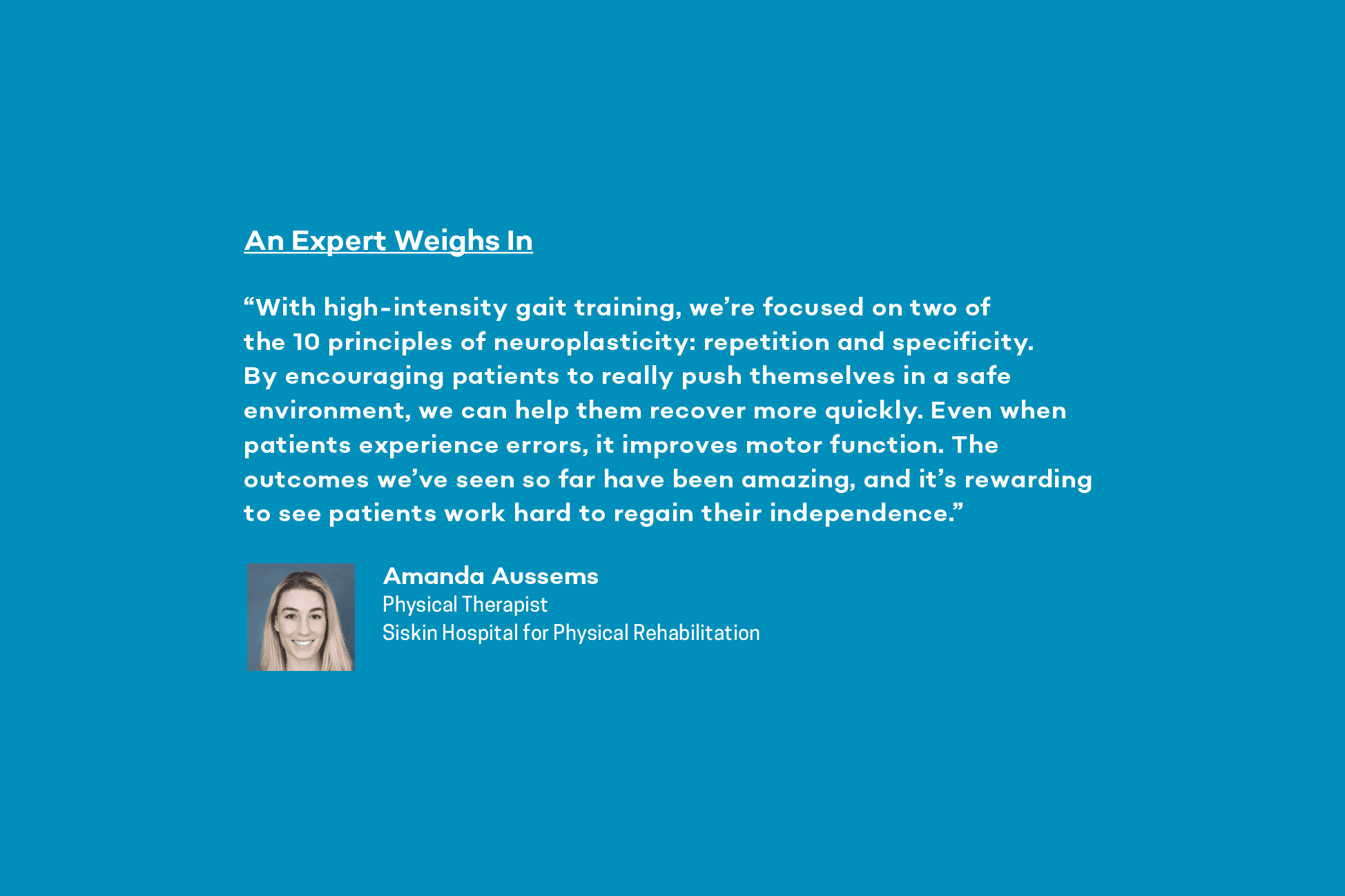Advancements in Medicine Section
Understanding Neuroplasticity
For patients who suffered a brain or spinal cord injury, or for those who experienced a stroke, it’s likely their neural pathways were affected. Years ago, it was thought that once these pathways were damaged, function was permanently lost. Today, we know that is not true.
Think of the neural pathways in your brain as a road map: Every time you think, feel, or act, a particular road is traveled. Each time you repeat a thought or task, your brain becomes familiar with that route, making it easier to travel. An injury that affects your pathways damages those familiar routes, which can hinder a number of important, everyday functions, like your ability to walk.
Fortunately, the brain has an amazing capacity to heal and increase motor and cognitive abilities again after injury. This is known as neuroplasticity, or the brain’s ability to change and form new neural connections throughout a person’s lifetime. Research has shown that rehabilitation that focuses on functional tasks such as walking encourages the use of the affected extremity, which takes advantage of neuroplasticity and promotes recovery.
New Solutions
With traditional physical therapy designed to help stroke or spinal cord injury sufferers regain their ability to walk, only about 34% of actual therapy time is dedicated to repetitive motion. This equates to approximately 1,000 steps in a given session. While this is helpful, new research suggests that patients might not be challenged enough in these scenarios to recover as well and as quickly as possible.
With high-intensity gait training, physical therapists look to maximize patient care and outcomes by focusing on faster paces and higher intensity to get patients working to 60-80% of their maximum heart rate.
How It Works
Through speed-dependent walking, and with the ability to add weights and inclines, remove assistance devices, and incorporate obstacles, patients can reach their heart rate ranges quickly and efficiently. In one session, a patient can expect to take anywhere from 2,000 to 6,000 steps. Using standardized measurements, clinicians will educate the patient on how they tested and improved over the course of treatment.
Benefits to Patients
Compared to traditional physical therapy, patients who participate in high-intensity gait training in an in-patient setting are experiencing improved functionality more quickly, which means a quicker return to home and to the things they love.





